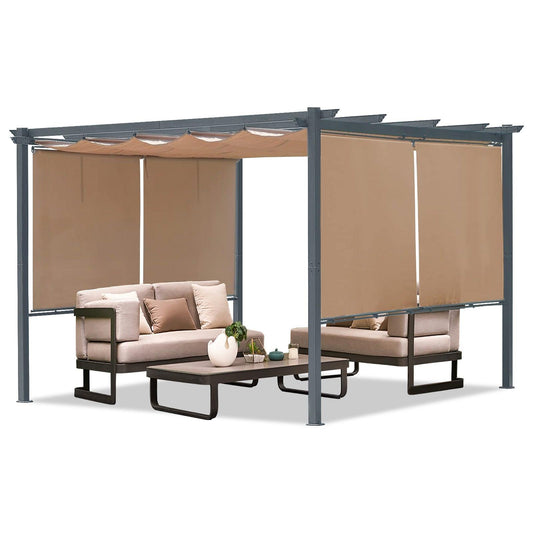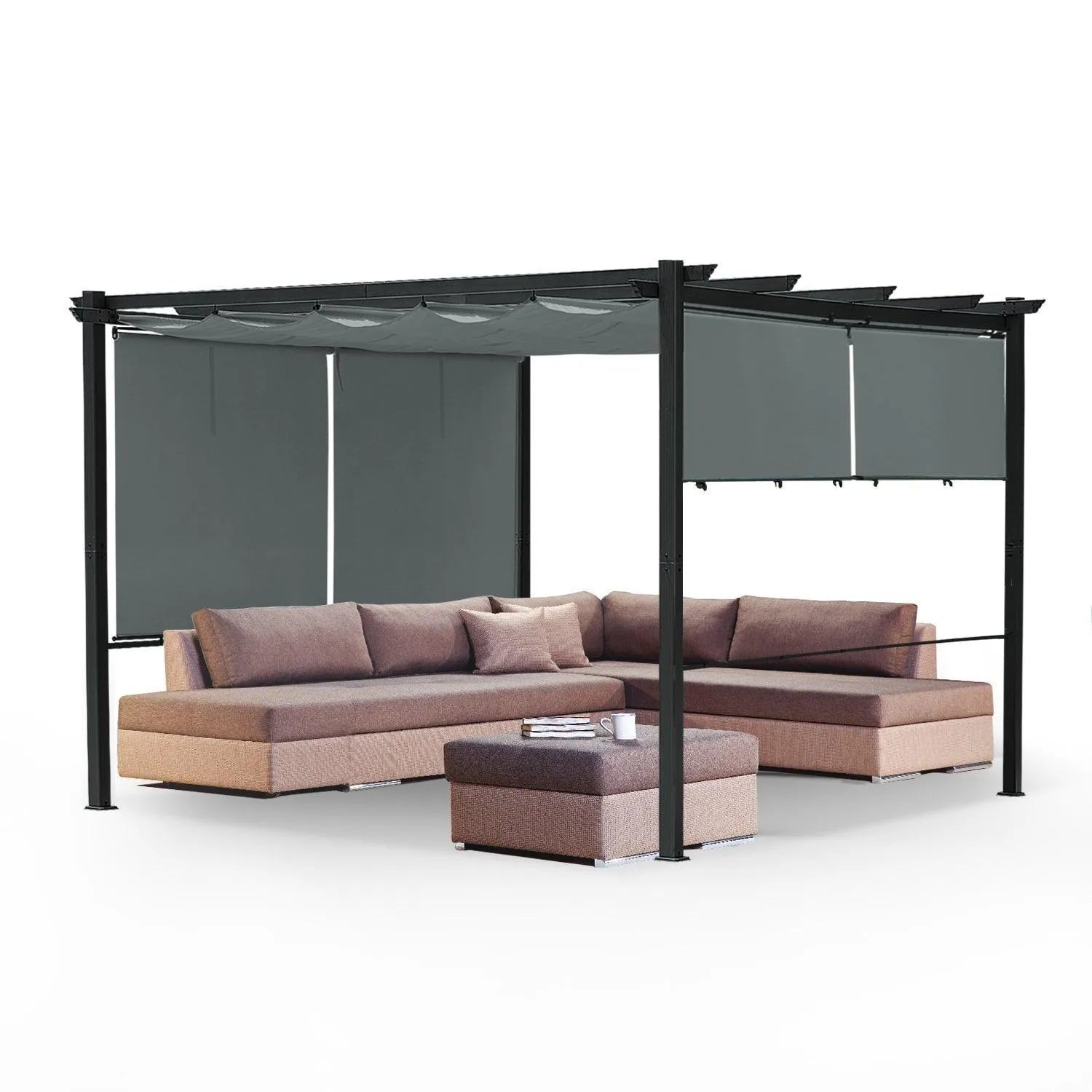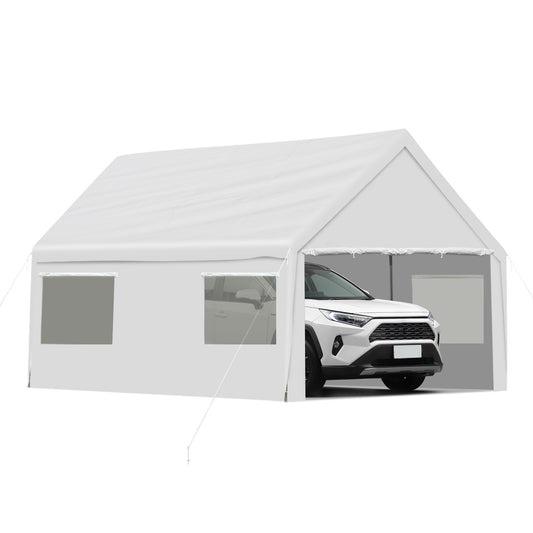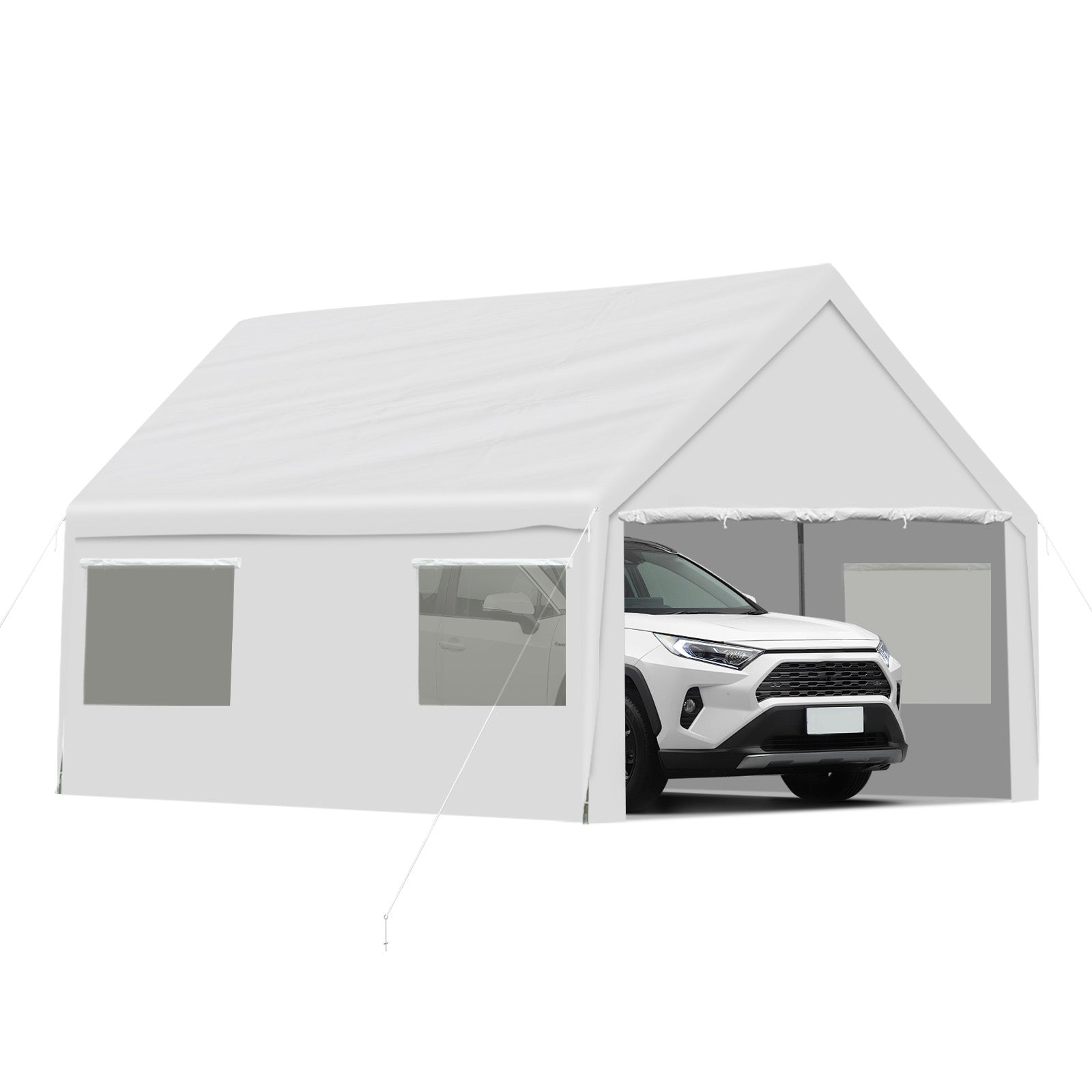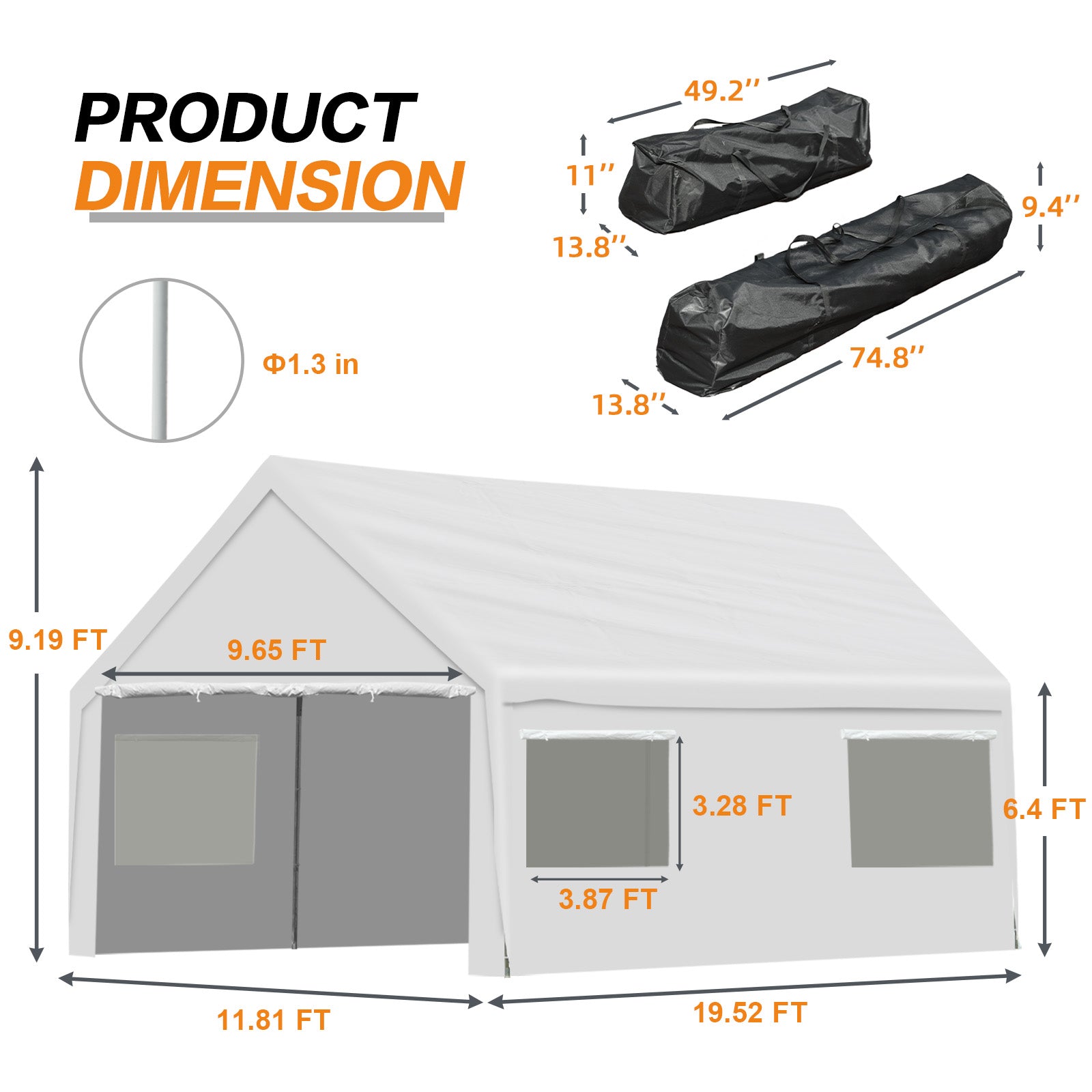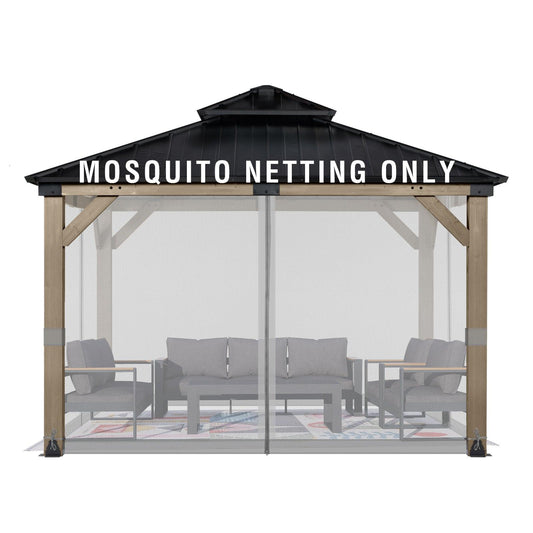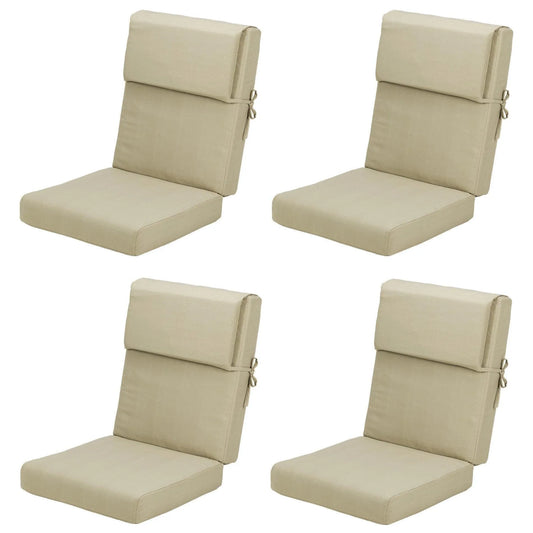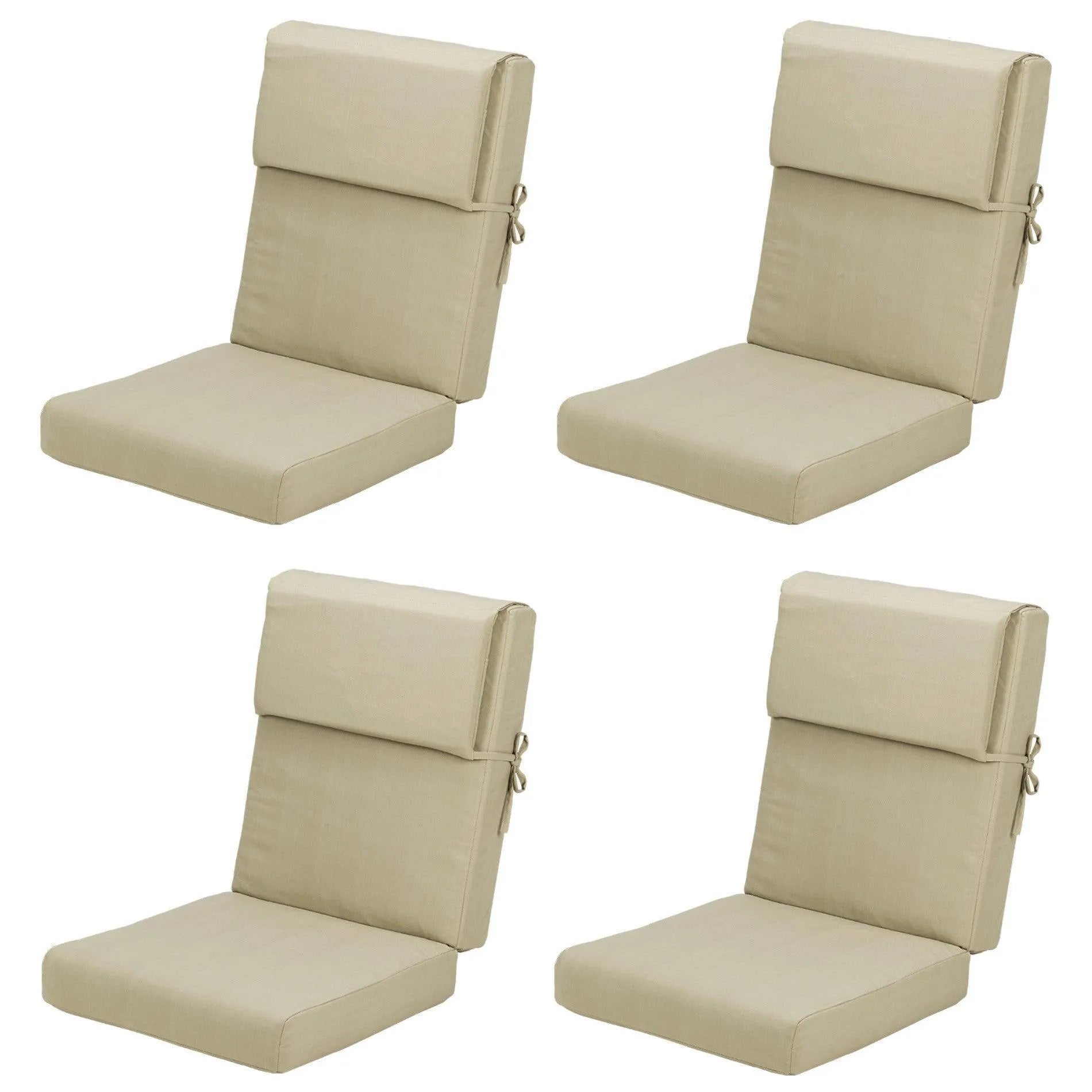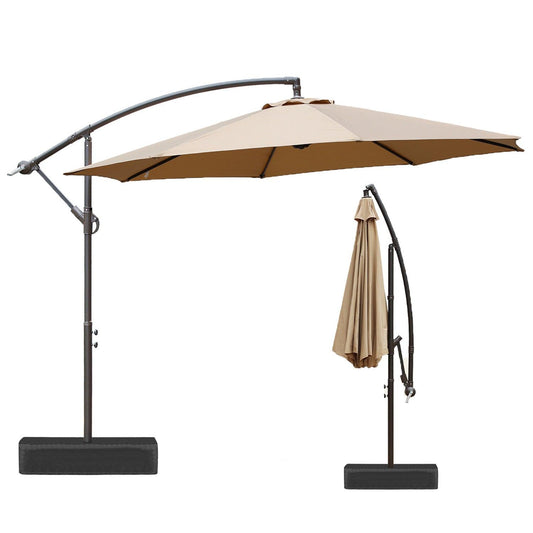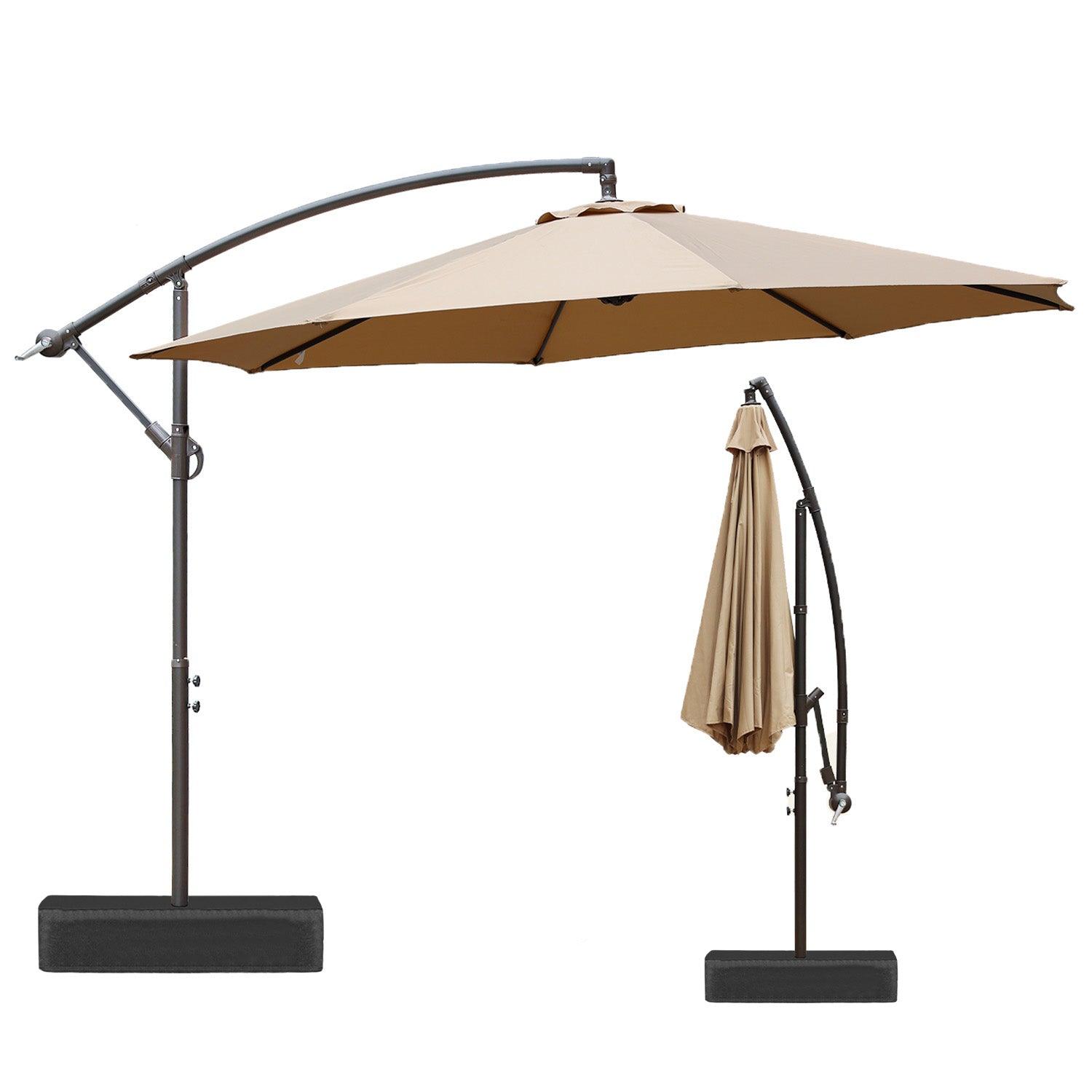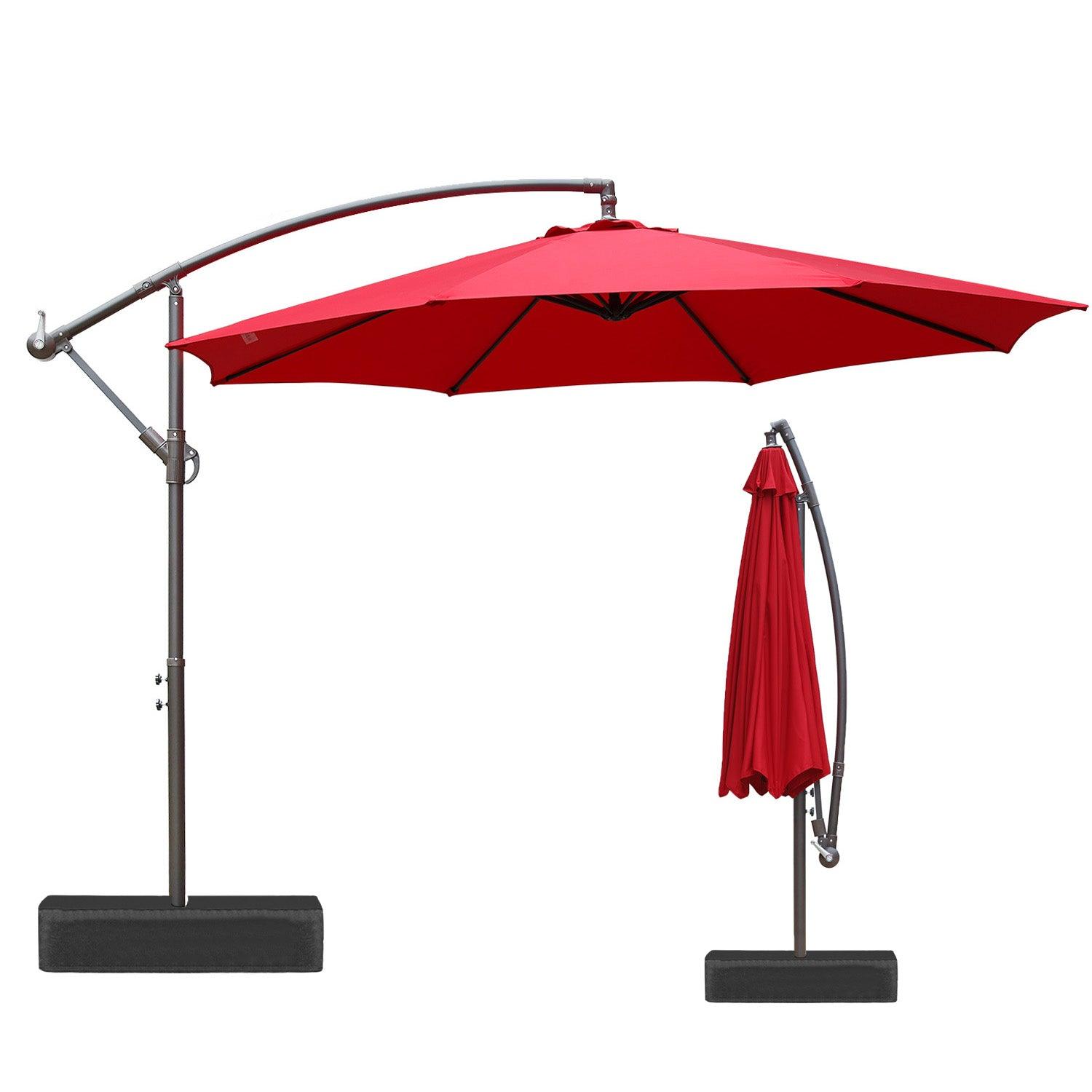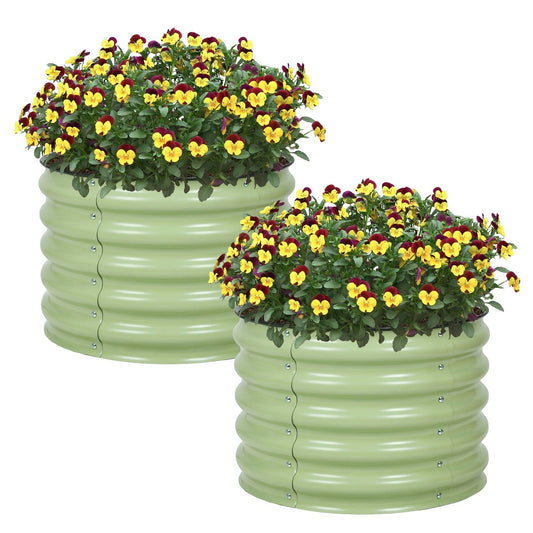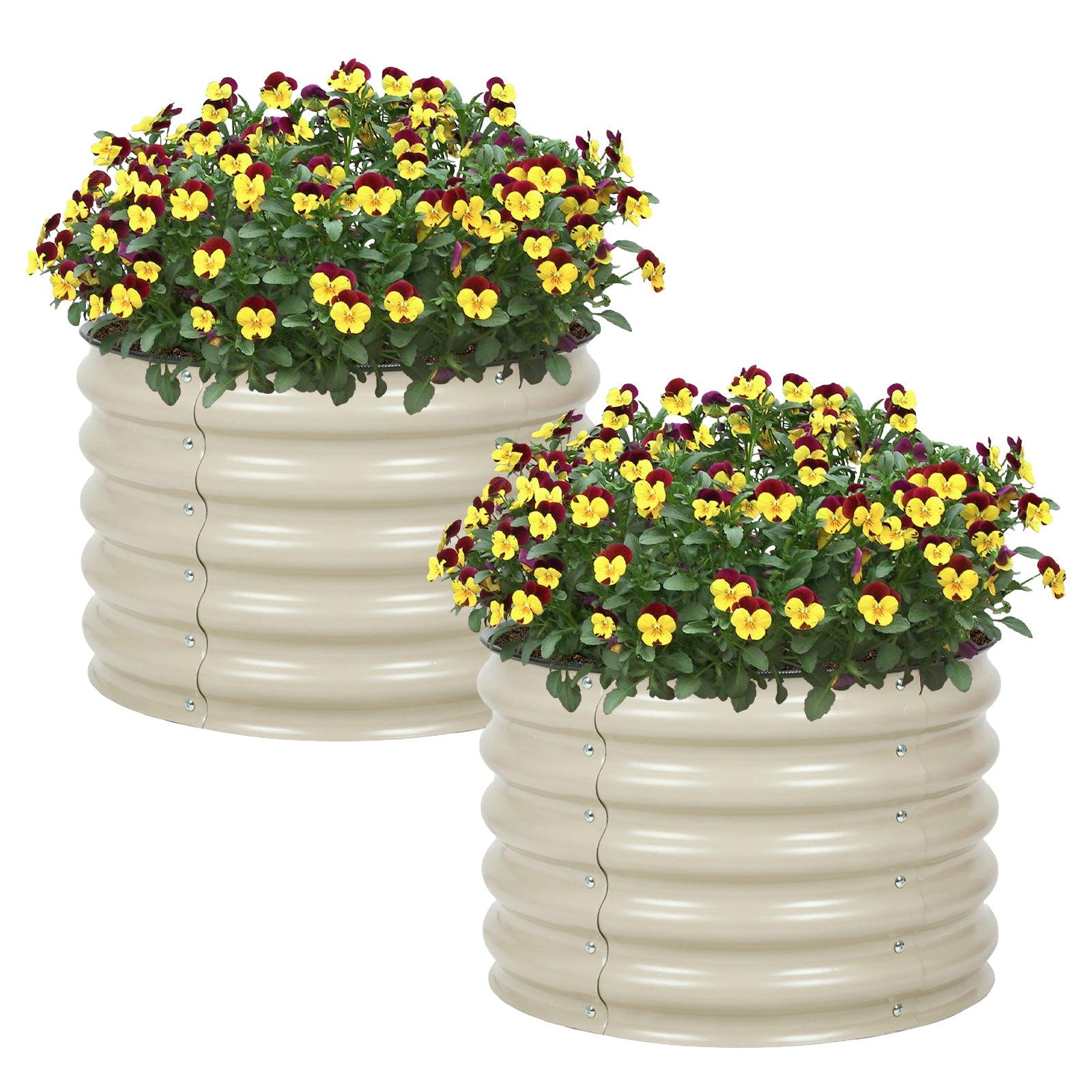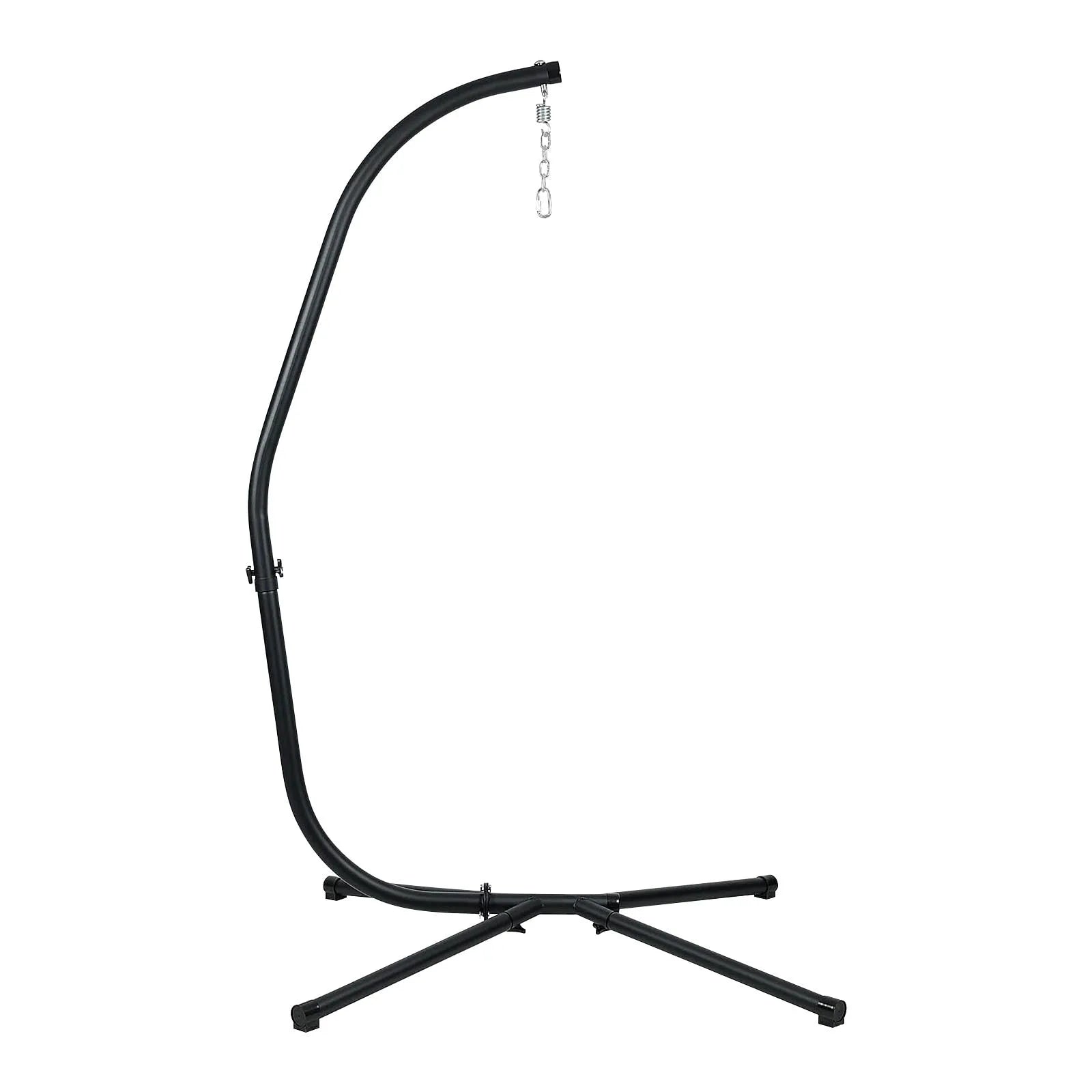Introduction
What weight umbrella base do I need to ensure safety and stability in your backyard? At Aoodor Shop, we understand the importance of the right patio umbrella base to support your free-standing patio umbrella and protect your best outdoor umbrella investment. This guide shares practical sizing advice, weight calculations, and portability features to keep your umbrella secure and make your outdoor space enjoyable all year.
1. How Heavy Should a Patio Umbrella Base Be? Understanding the Basics
Why Base Weight Matters: Stability and Safety First
Your patio umbrella base weight directly impacts the safety and functionality of your entire outdoor setup. An inadequately weighted base poses serious risks to your family, guests, and property. When wind catches an umbrella's canopy, it creates significant leverage that can easily topple a lightweight base, potentially causing injury or property damage.
Beyond safety concerns, the right base weight ensures your umbrella stays exactly where you position it, providing consistent shade throughout the day. This stability is particularly crucial for families who frequently entertain outdoors or have children playing in the backyard, where a shifting umbrella could create hazardous situations.
The Relationship Between Umbrella Size and Base Weight (Lbs Per Foot)
The fundamental rule for determining how heavy a patio umbrella base should be follows a simple calculation: 10 pounds of base weight per foot of umbrella diameter. This industry-standard ratio provides the foundation for safe umbrella operation across various conditions.
For example:
- A 6-foot umbrella requires a minimum 60-pound base
- A 9-foot umbrella needs at least 90 pounds
- An 11-foot umbrella demands 110+ pounds
However, this basic calculation serves as a starting point. Environmental factors, umbrella design, and intended use may require adjustments to these baseline weights.
Free-Standing Patio Umbrella Base vs. Table-Supported Bases
Free-standing patio umbrella bases face unique challenges compared to table-supported alternatives. Without the additional stability provided by a table's weight and surface area, free-standing bases must work harder to resist wind forces and maintain position.
Table-supported bases benefit from the table's mass and the umbrella's center position, which naturally distributes forces more evenly. Free-standing setups, conversely, rely entirely on the base's weight and design to counteract the umbrella's sail effect during windy conditions.
This difference means free-standing patio umbrella bases typically require 20-30% additional weight beyond the standard calculation to achieve comparable stability levels.
2. Matching Patio Umbrella Base Weight with Canopy Size: Practical Guidelines
Outdoor Patio Umbrella Base, Heavy Duty Square
What Size Umbrella Base Do I Need?
Understanding specific weight requirements for different umbrella sizes helps families make informed purchasing decisions and avoid common stability issues.
|
Umbrella Size |
Minimum Base Weight |
Recommended Weight |
Best For |
|
6-7 feet |
40-50 lbs |
60-70 lbs |
Small patio tables, intimate seating areas |
|
8-9 feet |
65-75 lbs |
80-90 lbs |
Standard family dining sets, medium outdoor spaces |
|
10-11 feet |
90-110 lbs |
110-130 lbs |
Large family gatherings, spacious patios |
|
12+ feet |
130+ lbs |
150-200+ lbs |
Commercial applications, very large outdoor spaces |
Extra Weight for Windy Conditions and Free Standing Setups
Families living in consistently windy areas or those preferring free-standing umbrella configurations should increase base weights by 25-50% above standard recommendations. Consider these adjustment factors:
- Mild wind conditions (5-15 mph average): Add 20-25% extra weight
- Moderate wind conditions (15-25 mph average): Add 30-40% extra weight
- Strong wind conditions (25+ mph frequent): Add 50%+ extra weight
How Surface Type (Hard vs. Soft) Impacts Required Base Weight
The surface beneath your patio umbrella base significantly affects stability requirements. Hard surfaces like concrete, stone, or tile provide excellent stability with standard weight calculations. These surfaces prevent base settling and maintain consistent positioning.
Soft surfaces such as grass, sand, or gravel require additional consideration. These surfaces may allow slight base settling or movement, potentially reducing effective stability. For soft surface installations, consider increasing base weight by 15-20% or using bases with broader footprints for better weight distribution.
3. Portability Features for Patio Umbrella Bases: Wheels and Handles
Benefits of Portable Umbrella Bases for Medium Families
Medium families often need flexibility in their outdoor arrangements, making portable patio umbrella bases extremely valuable. The ability to easily reposition umbrellas accommodates changing weather patterns, different activities, and seasonal patio furniture arrangements.
Portable bases enable families to:
- Follow optimal shade positioning throughout the day
- Store umbrellas in protected locations during storms
- Adapt outdoor layouts for parties or family gatherings
- Perform seasonal maintenance and cleaning more easily
Choosing Bases with Wheels/Handles Without Compromising Stability
Modern patio umbrella base designs successfully combine portability features with necessary stability. When selecting bases with wheels and handles, prioritize models that maintain structural integrity and adequate weight distribution.
Key features to seek:
- Reinforced wheel mounting points that won't fail under repeated use
- Retractable or removable wheels that don't interfere with stability when stationary
- Ergonomic handles positioned for comfortable lifting and maneuvering
- Low center of gravity designs that remain stable during transport
Quality portable bases use heavy-duty materials and thoughtful engineering to ensure portability features enhance rather than compromise functionality.
Best Materials for Lightweight and Durability
The best outdoor umbrella bases balance weight, durability, and weather resistance through careful material selection. Cast iron provides excellent stability but lacks portability. Concrete offers affordability but requires permanent placement. Modern composite materials and innovative designs offer optimal solutions for families seeking both portability and performance.
Premium materials include:
- High-density polyethylene (HDPE) with sand or water filling options
- Powder-coated steel with corrosion-resistant finishes
- Cast aluminum offers strength with reduced weight
- Composite materials combining multiple benefits
4. Enhancing Stability: Extra Weight Addition Options
Using Weight Bags, Sandbags, or Concrete Blocks
Many families discover their existing patio umbrella base needs additional weight for optimal performance. Rather than replacing the entire base, several weight addition options provide cost-effective stability improvements.
Weight bags offer convenient, removable additions that attach directly to umbrella bases. These specially designed bags resist weather exposure while providing 15-50 pounds of additional stability per bag.
Sandbags provide affordable weight addition but require weatherproof covers to prevent sand loss and moisture damage. Position sandbags strategically around the base perimeter for maximum effectiveness.
Concrete blocks deliver substantial weight addition at low cost. Ensure blocks are positioned safely to avoid tripping hazards and consider decorative covers to maintain aesthetic appeal.
Fillable Bases: Pros and Cons
Fillable patio umbrella bases offer attractive solutions for families seeking customizable weight options. These bases typically accommodate sand, water, or concrete filling, providing flexibility in weight adjustment and portability.
|
Advantages |
Disadvantages |
|
Lightweight when empty for easy transport |
Potential for leaks or filling material settling |
|
Customizable weight based on conditions |
May require periodic refilling |
|
Often more affordable than solid bases |
Water-filled bases can freeze in cold climates |
|
Easy storage during off-seasons |
Sand-filled bases may become difficult to empty |
Tips for Safely Adding Weight to Your Base
When enhancing your existing base's stability, prioritize safety and proper weight distribution. Improperly added weight can create new hazards or reduce overall effectiveness.
Safety guidelines include:
- Distribute additional weight evenly around the base perimeter
- Secure all added weights to prevent displacement
- Avoid creating tripping hazards with loose weight additions
- Test stability after modifications before normal use
- Consider professional consultation for significant modifications
5. Safety Tips When Installing Your Patio Umbrella Base
Securing Your Patio Umbrella Base Properly
Proper installation ensures your patio umbrella base performs as designed throughout its service life. Even the heaviest, highest-quality base can fail if incorrectly installed or positioned.
Installation best practices:
- Level placement: Ensure the base sits level on a stable, even surface
- Proper insertion: Insert the umbrella pole fully and secure all locking mechanisms
- Clearance verification: Maintain adequate clearance from structures, furniture, and walkways
- Regular inspection: Check all connections and hardware periodically
How to Avoid Tipping and Damage Caused by Wind
Wind remains the primary threat to patio umbrella stability, making wind-resistance strategies essential for family safety. Understanding wind behavior and implementing appropriate precautions prevents most umbrella-related accidents.
Preventive measures include:
- Close umbrellas during wind speeds exceeding manufacturer recommendations
- Install wind sensors or weather monitoring for automatic alerts
- Position strategically, considering prevailing wind directions
- Use tilt features to reduce wind catching during mild conditions
Maintenance Advice to Keep Your Base Durable
Regular maintenance extends base life while ensuring continued safety performance. Different base materials require specific maintenance approaches, but all benefit from periodic inspection and cleaning.
General maintenance tasks:
- Clean regularly to remove debris, salt, and staining
- Inspect hardware for wear, corrosion, or loosening
- Protect finishes with appropriate treatments as recommended
-
Store properly during off-season in harsh climates
Check our complete collection of patio umbrella bases for maintenance-friendly options designed for long-term family use.
FAQs
1. What weight umbrella base do I need?
The appropriate patio umbrella base weight depends on the size of your umbrella, local wind conditions, and the type of installation. For standard residential use, calculate 10 pounds of base weight per foot of umbrella diameter as your starting point. A 9-foot umbrella typically requires an 80-90 pound base, while larger 11-foot umbrellas need 110+ pound bases.
2. What is the Best Patio Umbrella Base?
The best patio umbrella base combines adequate weight, durable construction, and features that match your family's needs. For most medium families, bases offering 75-110 pounds with portability features (wheels and handles) provide optimal versatility. Look for weather-resistant materials and stable, low-profile designs that complement your outdoor décor.
3. How to Secure a Patio Umbrella Without a Base?
While not recommended for safety reasons, umbrellas can be temporarily secured using alternative methods in emergencies. Options include driving the pole into soft ground (sand or soil), using heavy furniture as anchors, or employing sandbags around the umbrella pole. However, these methods provide limited stability and should only be used temporarily with constant supervision.
4. How to Remove the Patio Umbrella from the Base?
Removing an umbrella from its base typically involves loosening the base's locking mechanism—often a thumbscrew, lever, or twist-lock system. With the mechanism loosened, lift the umbrella straight up while keeping the pole vertical. For heavy umbrellas, enlist help to prevent damage. Always close the umbrella before removal and ensure the base remains stable during the process.
Conclusion
Selecting the right patio umbrella base weight ensures your family's safety and outdoor enjoyment. Remember the golden rule: 10 pounds per foot of umbrella diameter, with additional weight for windy conditions. A properly weighted base prevents dangerous tipping while providing stable shade coverage. Whether you choose a portable base with wheels or a heavy-duty permanent option, prioritize safety over convenience. Visit Aoodor Shop's patio umbrella bases collection to find the perfect base for your backyard setup.
Ready to find the perfect patio umbrella base weight for your family? Browse our extensive collection at Aoodor Shop and discover bases designed specifically for medium families who value both safety and convenience.




